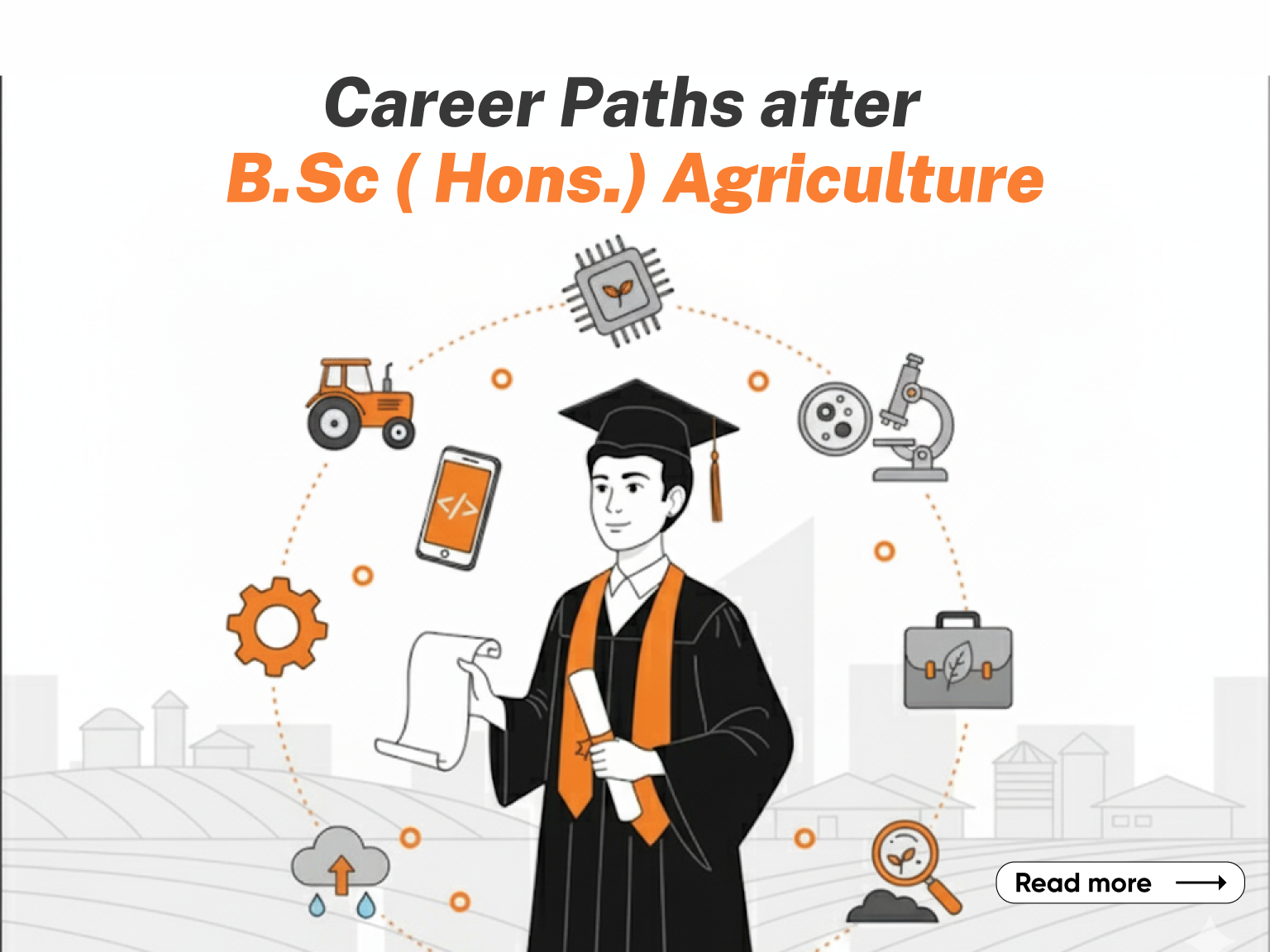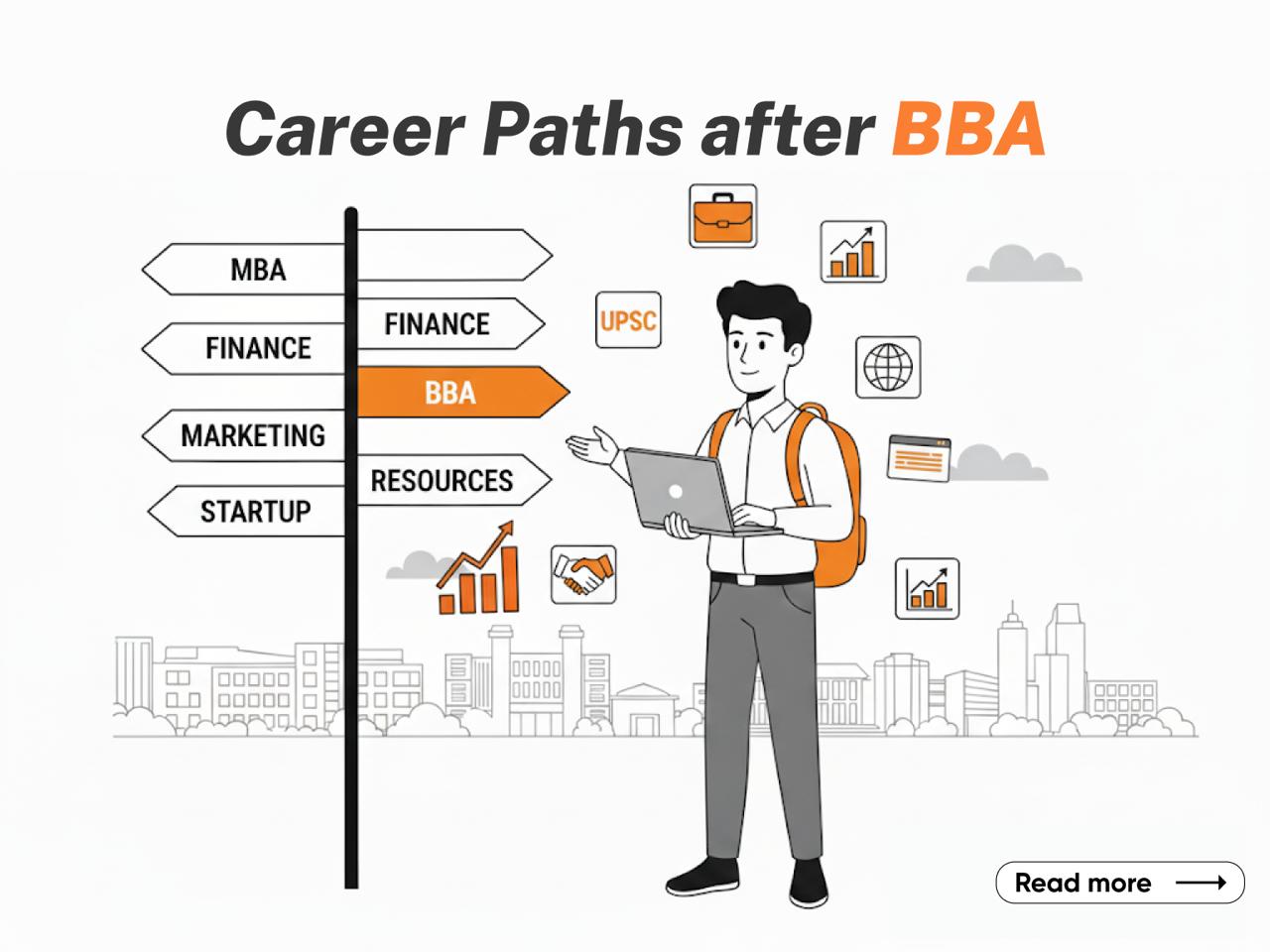- Why Choosing the Right Design Course Matters?
- What Is B.Design Product and Industrial Really About?
- Who Should Consider a Career in Product and Industrial Design?
- How Is This Programme Different from Fashion or Interior Design?
- What Skills Will You Develop in This Design Course?
- Which Career Goals Align Best with B.Design Product and Industrial?
- How to Decide If You’re a Creative Fit for This Course?
- Future of Product and Industrial Design in India and Abroad
- Alumni Success Stories in Product and Industrial Design
- Final Words
- Frequently Asked Questions (FAQs)
Why Choosing the Right Design Course Matters?
B.Design Product and Industrial is more than just creating visually appealing objects it is about designing smart, functional, and user-friendly products that improve everyday life.
From household appliances and mobile devices to furniture, packaging, and transportation systems, industrial designers shape how the world interacts with objects.
This course helps students develop a strong foundation in:
- Human-centered design
- Aesthetics and ergonomics
- Materials and manufacturing processes
- Design thinking and innovation
The programme combines artistic creativity with engineering logic, making graduates highly valuable across sectors like consumer electronics, automotive, healthcare, and sustainable design.
Graduates of B.Design Product and Industrial have versatile career options across industries.
Some potential roles include:
Core Design Careers
Product Designer
Industrial Designer
UX/UI Designer (with further specialization)
Packaging Designer
Not all design courses are created equal. The curriculum, faculty, industry exposure, and hands-on learning opportunities can vary greatly.
Choosing the right course is important because:
It shapes your creative and technical mindset
It aligns with your career goals
It provides industry-relevant tools
It connects you with industry mentors and internships
It determines your job-readiness
Choosing B.Design Product & Industrial is ideal for those passionate about creating tangible solutions that improve lives. But selecting the right course with the right mix of creativity, industry exposure, and technical rigor is what truly builds a strong foundation for a successful design career.
What Is B.Design Product and Industrial Really About?
B.Design Product and Industrial is a multidisciplinary undergraduate programme that focuses on the design and development of physical products that people use in their everyday lives. It goes far beyond just aesthetics; it involves understanding how products function, how users interact with them, how they are manufactured, and how they fit into a larger social, environmental, and economic context.
The course is rooted in human-centered design principles, where students learn to identify real-world problems, conduct user research, and create innovative, practical solutions through design. Whether it is a piece of furniture, an electronic device, a medical tool, or a packaging system, the goal is to design products that are functional, visually appealing, sustainable, and easy to use.
From designing ergonomic chairs to eco-friendly packaging or smart appliances, industrial designers identify user needs and pain points, and create effective solutions through design.
Human behavior, usability, comfort, and emotional response are central. Designers study how people use objects to make products more intuitive and enjoyable.
They gain hands-on experience in workshops, labs, and studios, working on live projects that simulate real-world design challenges. The curriculum also emphasizes ergonomics, sustainability, usability, and systems thinking training students to consider the entire lifecycle of a product from concept to user experience to disposal or reuse.
Key Areas Covered in B.Design Product & Industrial :
- Design Thinking & Innovation
- Sketching, Rendering & 3D Modeling
- CAD Software (e.g., SolidWorks, Rhino, Fusion 360)
- Prototyping & Fabrication
- Ergonomics & Human Factors
In a world increasingly driven by user experience and innovation, product and industrial designers play a vital role in shaping the future of how we live, move, work, and connect.
By blending design, technology, and human-centered innovation, this course prepares students to become thoughtful designers who can shape the way we live and interact with the world around us. As industries continue to evolve and demand more user-friendly, responsible, and innovative solutions, the role of industrial and product designers will only grow in importance — making this field an exciting and impactful career choice for aspiring creatives.
Who Should Consider a Career in Product and Industrial Design?
A career in Product and Industrial Design is ideal for individuals who are both creative and curious, and who enjoy solving real-world problems through innovative thinking and hands-on making.
If you are someone who finds inspiration in everyday objects wondering how they work, how they were made, or how they could be better this field could be a perfect fit. It suits those who are naturally observant, empathetic to users’ needs, and passionate about improving functionality and user experience through design.
Strong visual thinking, an eye for detail, and an interest in technology, materials, or manufacturing processes are all valuable traits. Whether you come from an artistic background or lean more toward engineering and innovation, industrial design offers a space where these strengths can merge.
The Students Consider a Career in Product and Industrial Design-
Creative Thinkers with a Problem-Solving Mindset
People Who Love to Build and Create
Individuals with a Strong Sense of Aesthetics
Empathetic, User-Centered Individuals
Those Passionate About Sustainability and Impact
Tech-Inclined Students with an Eye on Innovation
People Who Enjoy Interdisciplinary Collaboration
Aspiring Designers Who Want a Tangible Career Path
- You want to build a portfolio, gain real-world experience, and enter industries like consumer products, healthcare, automotive, home goods, or startups.
- You’re seeking a career that’s both creatively fulfilling and professionally stable.
Through access to cutting-edge labs, experienced faculty, and real-time projects, LPU helps shape the next generation of designers who are ready to lead in sectors like consumer electronics, automotive, sustainability, and beyond. If you dream of turning ideas into functional, beautiful, and user-friendly products, LPU’s design programme provides the perfect launchpad for your creative career.With a strong emphasis on industry exposure, hands-on learning, and interdisciplinary collaboration, LPU equips students with the skills and mindset needed to thrive in a competitive design-driven world. The programme is ideal for students who are curious, empathetic, tech-savvy, and passionate about designing meaningful products that improve lives.
How Is This Programme Different from Fashion or Interior Design?
While all three Product & Industrial Design, Fashion Design, and Interior Design fall under the creative umbrella of design, each has a unique focus, process, and end goal. Here’s how B.Design Product & Industrial stands apart:
1.Focus Of Design
- Product & Industrial Design
Focuses on designing physical products that people use—like gadgets, furniture, tools, packaging, transportation systems, or appliances.
It combines function, form, usability, and manufacturing feasibility. - Fashion Design
Centers on clothing, accessories, and textiles. It’s about style, trends, fabric, garment construction, and the fashion industry.
2. Purpose and Outcome
- Product & Industrial Design:
Solves functional problems with physical solutions that improve daily life. - Fashion Design:
Expresses personal or cultural identity through clothing and visual storytelling.
3. Skillset and Learning Area-
- Materials & manufacturing processes
- Ergonomics, prototyping, 3D printing
- User research and problem-solving
4. Industry Applications
- Product & Industrial Designers work in:
- Consumer electronics
- Automotive and transport design
- Healthcare/MedTech
B.Design Product and Industrial is ideal for those who want to create functional, tangible solutions that improve the way people live, work, and interact with everyday objects. While fashion and interior design focus more on lifestyle, personal expression, and spatial aesthetics, product design emphasizes practical innovation, user experience, and manufacturability.
What Skills Will You Develop in This Design Course?
A B.Design Product and Industrial programme equips you with a powerful combination of creative, technical, analytical, and professional skills making you job-ready in diverse industries. These skills are developed through hands-on studio work, design projects, industry internships, and collaborative learning.
1. Creative & Conceptual Skills
- Design Thinking – Learn to approach problems with empathy, creativity, and strategy.
- Ideation & Concept Development – Brainstorm and refine design ideas from sketch to prototype.
- Sketching & Visual Communication.
2. User-Centered & Analytical Skills
- User Research & Persona Building – Conduct interviews, observations, and surveys to design for real user needs.
- Ergonomics & Human Factors – Create products that are comfortable, safe, and intuitive to use.
- Problem-Solving.
3. Technical & Digital Skills
- CAD Software Proficiency – Master tools like SolidWorks, Rhino, Fusion 360, AutoCAD for 3D modeling.
- Rendering & Visualization – Use software like KeyShot or Blender to present realistic product visuals.
- Prototyping & Fabrication
4. Professional & Industry-Ready Skills
- Project Management – Plan, execute, and present design projects from concept to final output.
- Portfolio Development – Build a strong, industry-ready design portfolio.
- Communication & Presentation
By the end of this course, you’ll be able to confidently take a product idea from research and concept all the way to prototype and presentation — with the creative vision, technical expertise, and real-world understanding to back it up.Through a blend of hands-on studio work, design labs, interdisciplinary collaboration, and exposure to real-world projects, students at LPU develop a deep understanding of user needs, product functionality, aesthetics, and sustainability.
Which Career Goals Align Best with B.Design Product and Industrial?
B.Design Product and Industrial opens doors to a wide range of creative, technical, and strategic career paths. Whether you’re aiming to work in a design studio, launch your own products, or solve real-world problems through innovation, this course aligns well with several exciting career goals:
| Career Goal | Relevance to B.Design Product & Industrial |
| Build Strong Design Foundation | Essential for early projects, internships, and academic success |
| Intern with a Design Studio or Manufacturing Firm | Exposure to real-world design processes and user-focused development |
| Develop a Personal Portfolio | Critical for job applications and freelance opportunities |
| Specialize in a Niche (e.g., Sustainable Design, UX, CMF, Ergonomics) | Enhances expertise and employability in targeted sectors |
| Participate in Design Competitions (e.g., Red Dot, iF, Lexus) | Builds reputation, confidence, and industry visibility |
| Work with Global Product Companies | Leverage skills to influence global product design |
| Launch a Design Consultancy or Studio | Enables creative freedom and entrepreneurship |
| Become a Thought Leader in Industrial Design | Builds legacy and leadership in the design community |
| Contribute to Sustainable & Inclusive Design | Aligns with modern design values and long-term societal impact |
Pursuing a B.Design Product & Industrial opens a wide spectrum of career opportunities that blend creativity, technology, and human-centered problem-solving. By setting clear short-term, medium-term, and long-term goals, students can effectively navigate their academic journey and professional growth. Whether it’s mastering foundational skills, specializing in niche areas, contributing to sustainable innovation, or launching their own design venture, each step builds toward a fulfilling and impactful career.
How to Decide If You’re a Creative Fit for This Course?
- Deciding if you’re a creative fit for a B.Design Product & Industrial begins with understanding your natural interests and ways of thinking.
- If you enjoy solving real-world problems through visual and physical means, have a curiosity about how things work, and often find yourself thinking in three dimensions or sketching out ideas, you may be well-suited for this field.
- If you’re thinking about doing B.Design Product & Industrial at Lovely Professional University (LPU), here are detailed points specific to LPU to help you decide if you’re a good creative fit, plus what the course expects and offers.
- A passion for both aesthetics and functionality is key, as successful design balances beauty with usability. Being open to feedback, enjoying collaborative work, and having the patience to refine your ideas through multiple iterations are essential traits for aspiring designers.
- Additionally, a willingness to learn technical tools like CAD software and a genuine excitement about innovation, emerging technologies, and design trends further indicate a strong alignment with the course.
- If these qualities resonate with you, chances are you’ll thrive in a creative environment that encourages experimentation, critical thinking, and the design of meaningful, user-centered products.
- Choosing to pursue a B.Design Product & Industrial at LPU is an excellent option for students who possess a blend of creativity, curiosity, and problem-solving mindset.
- If you are someone who enjoys both visualizing and building physical products, exploring how things work, and reimagining everyday objects to improve user experience, this course can be a strong match for your abilities and interests.
- LPU provides a comprehensive learning environment with modern workshops, industry collaborations, and access to tools like CAD and 3D printing, ensuring you’re equipped with both theoretical knowledge and practical experience.
- The university’s focus on real-world design challenges, interdisciplinary learning, and project-based education allows you to grow not just as a designer but as an innovator.
- Moreover, opportunities for internships, participation in national and international competitions, and exposure to the latest trends in sustainability and technology make the programme highly dynamic and future-ready.
| Did You Know ?
Product designers often work at the intersection of engineering, art, psychology, and business. India’s design industry is growing at 23-25% annually. |
Future of Product and Industrial Design in India and Abroad
Product and Industrial Design is rapidly transforming on a global scale, driven by innovation, sustainability, and user-centered thinking. The demand for well-designed products—both physical and digital—is growing across industries like consumer electronics, healthcare, automotive, home appliances, and smart devices. Designers today are not only expected to make products look appealing, but also to ensure functionality, efficiency, and emotional resonance with users.
Global Outlook-
Emerging technologies such as Artificial Intelligence (AI), Internet of Things (IoT), 3D printing, and augmented reality (AR) are reshaping the way products are imagined, developed, and tested. With the rise of “phygital” products (physical + digital), designers must now blend physical form with digital experiences. Globally, sustainability has also become a core concern—companies are investing in circular design practices, eco-friendly materials, and reducing environmental impact. In countries like the US, Germany, Japan, and the Scandinavian nations, industrial design is already an integral part of innovation strategies, and demand continues to rise for designers who can work across disciplines and create solutions that are inclusive, ethical, and sustainable.
Indian Outlook-
In India, the future of Product and Industrial Design is equally promising and rapidly evolving. The Indian government’s initiatives such as ‘Make in India’, ‘Startup India’, and PLI (Production Linked Incentive) schemes are encouraging domestic innovation and manufacturing, which directly boosts demand for product designers. India is no longer just a service economy—it is becoming a product innovation hub, especially in sectors like electric vehicles (EVs), home appliances, health tech, and low-cost rural innovations.
Key Trends-
Strong demand for eco-conscious design and biodegradable/recyclable products.
Designers must blend physical form with digital interfaces and smart tech.
Focus on designing for diverse users across age, ability, and geography.
Faster design cycles through 3D printing, digital simulation, and agile design.
The future of Product and Industrial Design in India and abroad is full of potential and purpose. As the world shifts toward more human-centric, sustainable, and technology-integrated solutions, designers are becoming central to innovation and problem-solving. For aspiring designers, this means exciting opportunities—but also the need for adaptability, interdisciplinary learning, and a mindset focused on impact, not just aesthetics. Whether designing for global tech companies or local communities, the next generation of designers will play a vital role in shaping how we live, work, and connect with the world around us.
Alumni Success Stories in Product and Industrial Design
Alumni from Product and Industrial Design programmes, both in India and abroad, have achieved notable success by blending creativity, technical skill, and industry insight. At Lovely Professional University (LPU), several graduates have gone on to secure impressive placements and design achievements.
Most successful alumni actively engaged in hands-on projects, internships, and prototyping during their studies, which helped build strong portfolios and industry-ready skills.
Alumni who filed design patents or created unique products during their course stood out—not just in placements but as creators and innovators.
While LPU offers great labs, industry tie-ups, and global exposure, the most successful alumni were those who fully used these opportunities and pushed themselves beyond the classroom.
Some of the Student Achievements are-
- Mohamad Bin Mohamadali secured an international placement with a 19.5 LPA package.
- Ankit Kumar has secured successfully secured a placement at Bullspree with an impressive package of 12 LPA.
- HP Dhanraj and Parbhu Babu has secured a placement at Navigus with an impressive package of 9.1 LPA.
The journeys of successful alumni in Product and Industrial Design highlight the immense potential this field holds for creative, skilled, and motivated individuals. From high-paying placements and international job offers to innovative product designs and registered patents, these stories reflect how a strong foundation in design education especially from institutions like LPU can lead to diverse and fulfilling career paths. They also emphasize that success is built not just on talent, but on consistent effort, hands-on experience, and the ability to adapt to real-world challenges. As the design industry continues to evolve globally and in India, alumni achievements serve as inspiration and proof that with the right skills and mindset, the future in Product and Industrial Design is both promising and impactful.
Final Words
A B.Design Product and Industrial is more than just a creative degree—it’s a launchpad into a world of innovation, problem-solving, and user-centered design. This field blends art, engineering, technology, and sustainability, making it ideal for those who want to create meaningful, functional products that improve everyday life.
For aspiring designers, success lies in building a strong portfolio, mastering essential tools like CAD, 3D modeling, and staying updated with trends like AI integration, circular design, and digital fabrication. Real-world experience through internships, design competitions, and collaborative projects will set you apart in a competitive industry.
Whether your goal is to work with top design firms, launch your own startup, or drive social impact through design, this programme equips you with the skills and mindset needed for a versatile and global career.
Career Advice for Design Students
-
- Stay curious – Keep exploring new materials, tools, and ideas.
- Be hands-on – Learn by doing: prototypes, models, mock-ups.
- Document everything – Build a detailed portfolio with strong storytelling.
- Focus on users – Great design starts with understanding people.
- Collaborate often – Work with engineers, marketers, developers.
- Think globally – Study trends beyond your local market.
- Never stop learning – Tech and design evolve fast—so should you.
For aspiring design students, the path to success lies in building a strong portfolio, staying updated with emerging tools and trends, gaining practical experience, and thinking beyond just visual appeal to create solutions that improve lives. With dedication, curiosity, and a user-centric mindset, graduates can look forward to a fulfilling and impactful career in the global design industry.
| Did You Know ?
Product and Industrial Design blends creativity with engineering and user psychology. Designers need to understand materials, manufacturing processes, ergonomics, and aesthetics all at once. Tools like 3D printing and CAD software have revolutionized product design, allowing designers to quickly create prototypes and iterate |
Frequently Asked Questions (FAQs)
1.What skills do I need to pursue Product and Industrial Design?
Creativity, problem-solving, technical skills (CAD, sketching), knowledge of materials and manufacturing processes, empathy for users, and good communication skills.
Familiarity with different materials (plastics, metals, wood, textiles) and their properties to choose the right ones for your designs.
2.What career options are available after completing B.Design?
You can work as a product designer, industrial designer, UX/UI designer, packaging designer, design consultant, or in fields like automotive design, furniture design, consumer electronics, and more.
3.Do I need a background in engineering or art to join B.Design?
No strict background is required, but a basic understanding of both technical and artistic aspects is helpful. Most programmes provide foundational training.Most B.Design programmes are designed to be beginner-friendly and teach foundational skills in the first year—covering sketching, design thinking, model-making, and digital tools.
4.What’s the difference between product design and industrial design?
Product design focuses on consumer products (gadgets, furniture), while industrial design covers a broader range, including machinery, vehicles, and large-scale production.
A product designer might design a new smartwatch interface and casing.
An industrial designer might design the entire manufacturing process and ergonomics for that watch, ensuring it can be mass-produced efficiently.
5.Can I work internationally after this degree?
Yes, design skills are globally in demand. However, understanding market needs and standards in different countries helps.
International employers care more about your skills and design thinking than your degree title.













![Why B.Tech. Aerospace Engineering [Lateral Entry] at LPU Stands Out? Why B.Tech. Aerospace Engineering [Lateral Entry] at LPU Stands Out?](https://www.lpu.in/blog/wp-content/uploads/2025/10/B-Tech-Aerospace-Engineering-Lateral-Entry-02.png)
